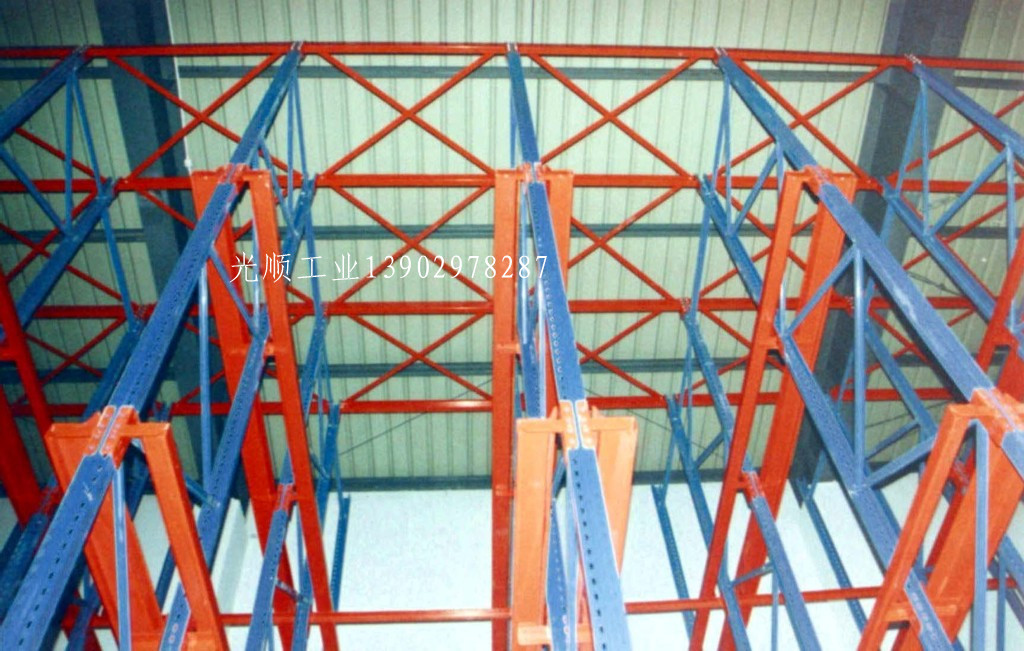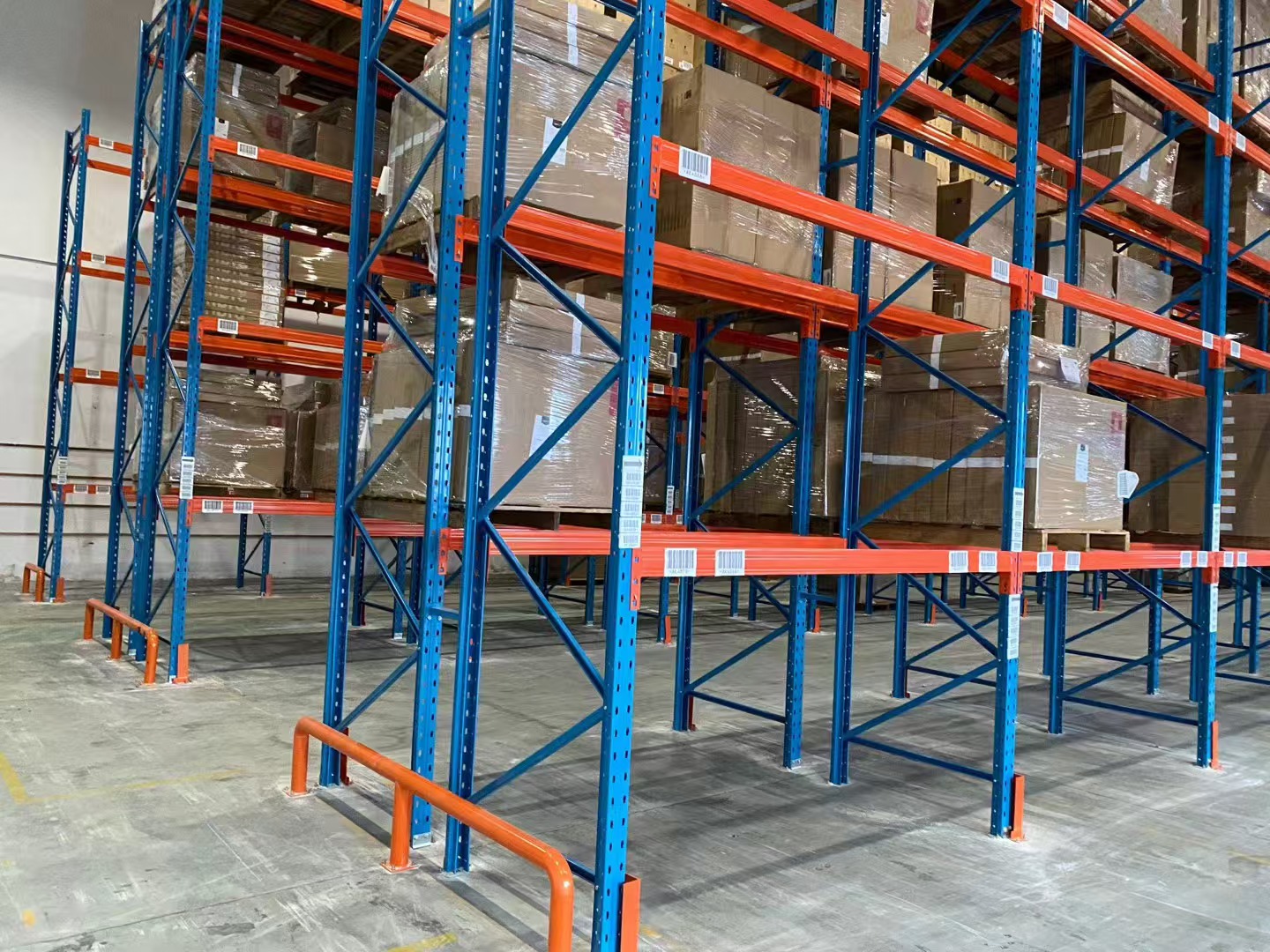In the demanding world of industrial storage, warehousing, and material handling, maximizing space and ensuring safe, efficient access to bulky, long, or awkwardly shaped items is paramount. Enter rayonnages cantilever – the robust, versatile backbone for storing everything from lumber, piping, and steel bars to furniture, carpets, and large panels. Unlike traditional pallet racking, rayonnages cantilever eliminate front column obstructions, offering unparalleled accessibility from three sides. This comprehensive guide dives deep into the world of cantilever racking, exploring its structure, benefits, applications, and critical considerations, solidifying why rayonnages cantilever are the preferred solution for challenging storage needs.

1. Understanding the Core Structure & Mechanics of Rayonnages Cantilever
At its heart, rayonnages cantilever is an ingeniously simple yet incredibly strong structural system. Its design revolves around the principle of the cantilever – a beam anchored firmly at only one end, projecting horizontally to support a load at the other end.
Vertical Uprights (Columns): These are the backbone of the system, typically constructed from heavy-duty steel profiles (often tubular or box-section for maximum strength and resistance to torsion). They are securely anchored to the concrete floor using robust base plates and high-tensile anchor bolts. The uprights feature precisely spaced holes or slots along their height.
Cantilever Arms: These are the defining components. Made from substantial steel tubing (often rectangular or round), the arms insert horizontally into the uprights via mounting brackets. The key is that these arms project forward without any supporting column in front of them. Arms are installed in pairs (one on each side of the upright) at each desired level. Load rests directly on these arms.
Base Frame & Bracing: A sturdy base frame connects the uprights at floor level, providing crucial lateral stability. Diagonal bracing, either between uprights in a bay or connecting bays together, is essential to counteract the significant forward and sideways forces exerted by the loaded arms, preventing rack sway or collapse.
Load Beams (Optional but Recommended): For enhanced stability, safety, and to prevent items from rolling off, horizontal load beams can be installed perpendicular to and resting on the cantilever arms. These are particularly useful for loose items like pipes or bars.
Anchoring: Proper seismic anchoring to the concrete slab is non-negotiable. The overturning forces generated by loaded cantilever arms are substantial, and high-quality anchors designed for uplift and shear forces are critical for system integrity and safety.
This structure creates the signature open-front access that makes rayonnages cantilever so valuable for handling long or bulky materials.
2. Unlocking Versatility: Key Applications & Industries for Rayonnages Cantilever
The unique open-access design of rayonnages cantilever makes them indispensable across a wide spectrum of industries dealing with non-palletized, long, heavy, or irregularly shaped inventory:
Building Materials & Lumber: Perfectly suited for storing lumber, plywood, sheetrock, steel beams, rebar, tubing, PVC pipes, and insulation rolls. Forklifts can easily drive parallel to the racks for direct side-loading/unloading.
Metalworking & Fabrication: Ideal for storing raw stock like bar stock, sheet metal, plate steel, extrusions, and finished long products (pipes, tubes, channels). Arms can be adjusted to accommodate varying lengths and weights.
Furniture & Fixtures: Efficiently store mattresses, sofas, tables, cabinets, doors, and window frames. The open front allows for easy visual inspection and selective retrieval.
Plastics & Composites: Handle large plastic sheets, rods, tubes, fiberglass panels, and composite materials effectively.
Paper & Textiles: Store large rolls of paper, vinyl, carpeting, and fabric bolts vertically or horizontally.
Automotive & Aerospace: Organize long components, trim pieces, exhaust systems, wing spars, and other bulky parts.
Retail Warehouse (Big-Box): Back-of-store storage for oversized items like fencing, ladders, trim, and seasonal goods.
Specialized Storage: Kayaks, wind turbine blades (specialized heavy-duty systems), signage, and agricultural equipment parts.
The adaptability in arm length, spacing (vertical and horizontal), and load capacity allows rayonnages cantilever to be precisely tailored to virtually any long or bulky item storage challenge.

3. Operational Advantages: Why Choose Rayonnages Cantilever?
Beyond their fundamental purpose, cantilever racks deliver significant operational benefits that drive efficiency and cost savings:
Unparalleled Accessibility: The complete lack of front columns is the defining advantage. Forklifts or handling equipment can approach the load from the front, left, or right side, significantly reducing maneuvering time and effort compared to traditional racking. This is crucial for quick loading/unloading of long items.
Maximized Space Utilization: Rayonnages cantilever allow for dense storage of long items in configurations that would be impossible or highly inefficient with other rack types. They can utilize wall space effectively or be placed back-to-back in the middle of a warehouse aisle. Vertical space is fully exploited.
Enhanced Visibility & Selectivity: The open design provides excellent visibility of stock, simplifying inventory checks and enabling easy access to specific items without moving others (First-In, First-Out - FIFO - is easily achievable). No more digging through pallets.
Durability & Longevity: Constructed from high-grade steel and engineered for heavy loads, rayonnages cantilever systems are incredibly robust and durable. Properly maintained, they offer a very long service life, providing an excellent return on investment.
Flexibility & Scalability: Arm levels can be easily adjusted vertically as storage needs evolve. Arms can be added or removed. The modular design allows systems to be reconfigured, extended, or relocated relatively easily compared to welded structures. Different arm lengths can be used within the same bay if needed.
Reduced Product Damage: Careful loading directly onto the arms or beams minimizes the handling steps required compared to double or triple handling pallets, reducing the risk of damage to the stored goods.
Efficiency Gains: Faster loading/unloading cycles, easier inventory management, and optimized space lead to significant improvements in warehouse throughput and overall operational efficiency.
4. Safety First: Critical Design and Operational Considerations for Rayonnages Cantilever
The immense strength of rayonnages cantilever is matched by the significant forces they must withstand. Safety is absolutely paramount in their design, installation, and use:
Professional Engineering & Design: Systems MUST be designed by qualified structural engineers familiar with racking standards (like EN 15620 in Europe, RMI/ANSI MH16.1 in North America). Design considers:
Load Capacity: Precise calculation of maximum uniformly distributed loads (UDL) and concentrated loads per arm level and for the entire bay.
Seismic & Wind Forces: Critical in relevant geographic zones. Design includes appropriate safety factors.
Deflection Limits: Ensuring arms don't bend excessively under load, maintaining safety and accessibility.
Frame Spacing: Determining the optimal distance between uprights based on arm length, load, and stability requirements.
Robust Anchoring: As mentioned earlier, this cannot be overstated. Anchors must be specified by the engineer, correctly installed into suitable concrete (strength verified), and regularly inspected.
Proper Installation: Installation must strictly follow the manufacturer's and engineer's specifications by trained personnel. This includes correct leveling, bolt torquing, and bracing installation. Post-installation inspections are crucial.
Safe Loading Practices:
Never Exceed Rated Capacity: Load capacities must be clearly marked on each bay/level. Overloading is a primary cause of failure.
Distribute Load Evenly: Avoid placing excessive concentrated loads. Center the load on the arms.
Balance the Load: Ensure weight is distributed relatively evenly between the left and right arms on a level to prevent torsion on the upright.
Use Load Beams for Stability: Especially for cylindrical or loose items prone to rolling.
Avoid Side Impact: Forklift operators must be trained to handle loads carefully to avoid striking the uprights or arms.
Regular Inspections: Implement a rigorous inspection program by trained personnel (daily visual checks by operators, regular formal inspections by qualified individuals). Look for damage (bent arms, dented uprights, damaged base plates), loose bolts, damaged anchors, overloaded bays, and any signs of misalignment or settlement. Address issues immediately.
Clear Aisles & Signage: Maintain clear aisle widths for safe forklift operation. Post clear capacity signs and safety instructions.
5. Choosing the Right Rayonnages Cantilever System: Key Buying Factors
Selecting the optimal cantilever racking system requires careful analysis of specific needs:
Item Characteristics: Length, width, height, weight (per item and total per storage position), shape, and stability (e.g., do items roll?).
Required Storage Capacity: Total volume and weight of inventory to be stored.
Handling Equipment: Type and capacity of forklifts or cranes used (reach, lift height, fork length). This dictates minimum aisle widths and maximum storage heights.
Warehouse Environment: Floor condition and strength, ceiling height, column locations, door positions, seismic zone, and potential exposure to corrosive elements (may require galvanized or painted finishes).
System Configuration:
Single-Sided: Against a wall.
Double-Sided (Back-to-Back): Most common for freestanding rows, sharing a central row of uprights. Very space-efficient.
Drive-In/Drive-Through: A specialized, denser configuration where forklifts drive into the rack structure between the arms (requires specific design and safety protocols).
Arm Specifications: Length (determines load projection and capacity), profile (tube shape/size), and vertical spacing (based on item height).
Frame Specifications: Upright profile/size, base frame strength, bracing type and location.
Quality & Compliance: Choose reputable manufacturers adhering to international safety and quality standards (ISO, RMI/ANSI MH16.1, EN 15620, AS 4084). Look for certified structural calculations.
Supplier Expertise: Partner with a supplier offering expert design consultation, proper engineering documentation, professional installation, and ongoing support (inspections, parts).
6. Beyond the Basics: Installation, Maintenance & Optimization
Successfully implementing rayonnages cantilever extends beyond purchase:
Professional Installation: Always use the supplier's trained installers or certified third parties following the approved drawings. Verify anchor pull tests if required by code or specification. Obtain a post-installation certificate.
Ongoing Maintenance & Inspection: Establish and enforce a formal inspection schedule. Train warehouse staff to recognize damage and report it immediately. Keep inspection records. Regularly check bolt tightness (especially after initial installation and seismic events) and anchor integrity.
Load Distribution Planning: Develop a warehouse plan that distributes weight evenly across the system. Avoid concentrating all heavy items in one area. Consider the cumulative load on the floor slab.
Protective Measures: Column guards (to protect uprights from forklift impact) and end-of-aisle protectors are highly recommended safety additions. Arm end caps can prevent snagging.
Optimizing Layout: Work with specialists to design the most space-efficient and workflow-friendly layout, considering flow of goods, picking paths, and future expansion potential. Utilize vertical space effectively within safe operating heights for equipment.
Rayonnages cantilever are far more than simple shelving; they are engineered storage solutions designed to conquer the unique challenges of handling long, heavy, and bulky items. Their open-front design, inherent strength, and remarkable flexibility make them indispensable across countless industries. By delivering unparalleled accessibility, maximizing valuable warehouse space, enhancing visibility, and improving operational efficiency, cantilever racking systems offer a compelling return on investment. However, this power demands respect. Success hinges on meticulous engineering, professional installation, strict adherence to load capacities, rigorous safety protocols, and diligent maintenance. When implemented correctly, rayonnages cantilever provide a safe, efficient, and durable foundation for managing even the most demanding storage requirements, solidifying their status as the ultimate solution for heavy-duty, long-load warehousing. Investing in a well-designed and properly managed cantilever racking system is an investment in the smooth, safe, and profitable operation of your warehouse.







